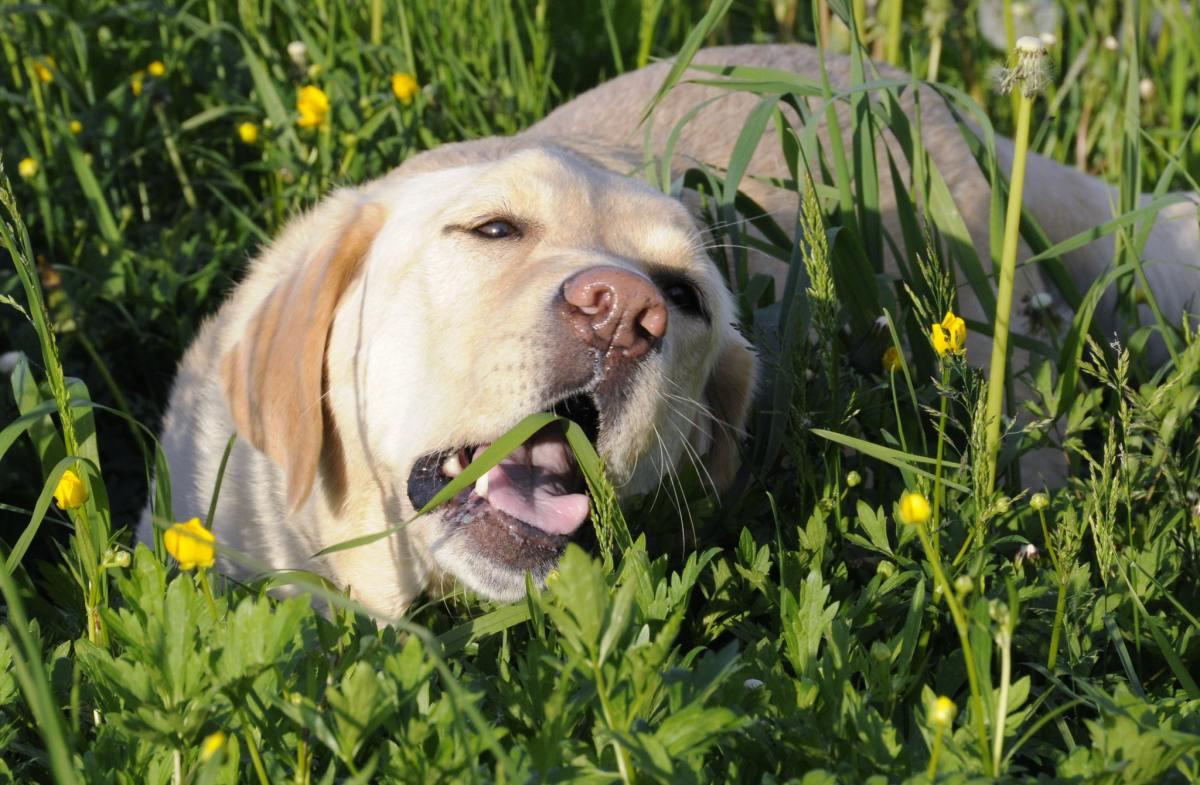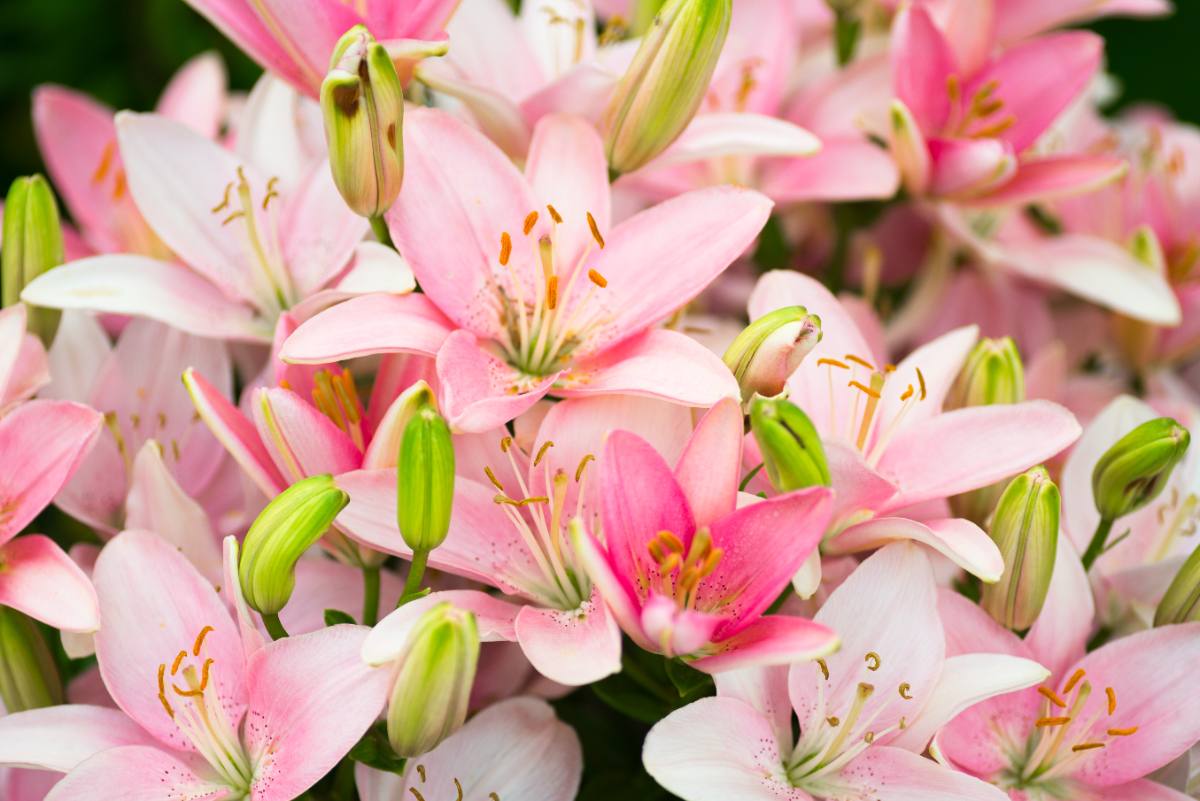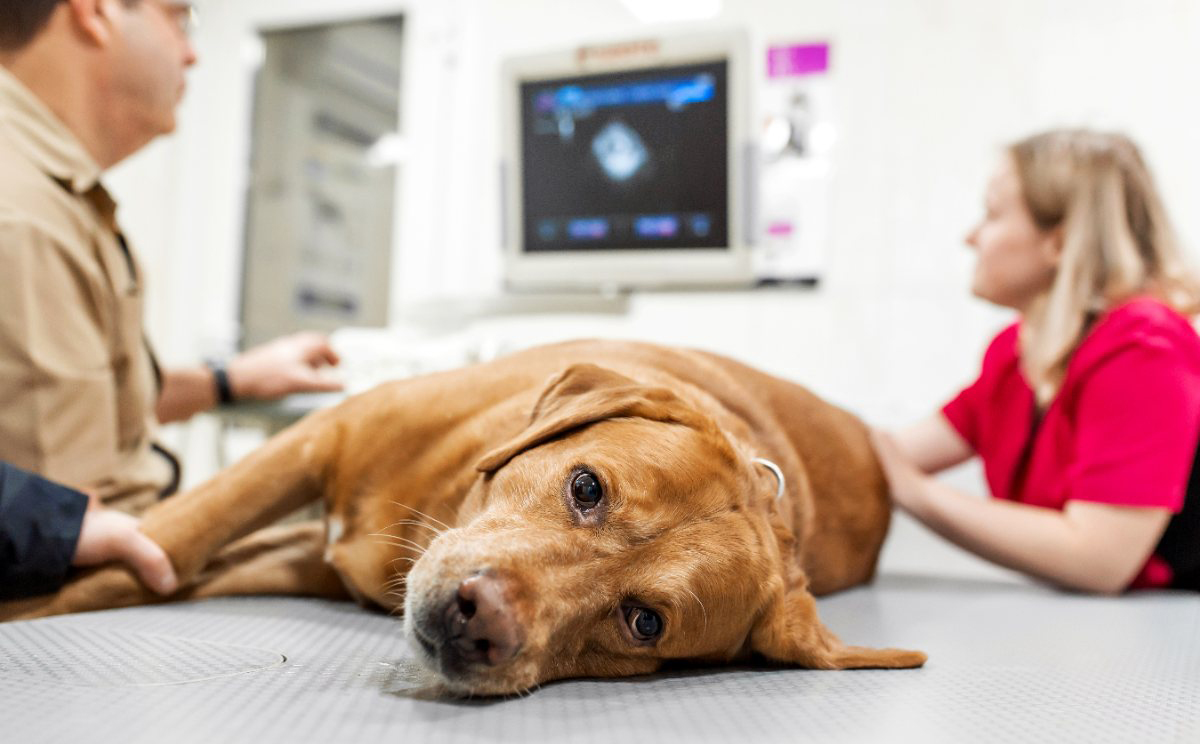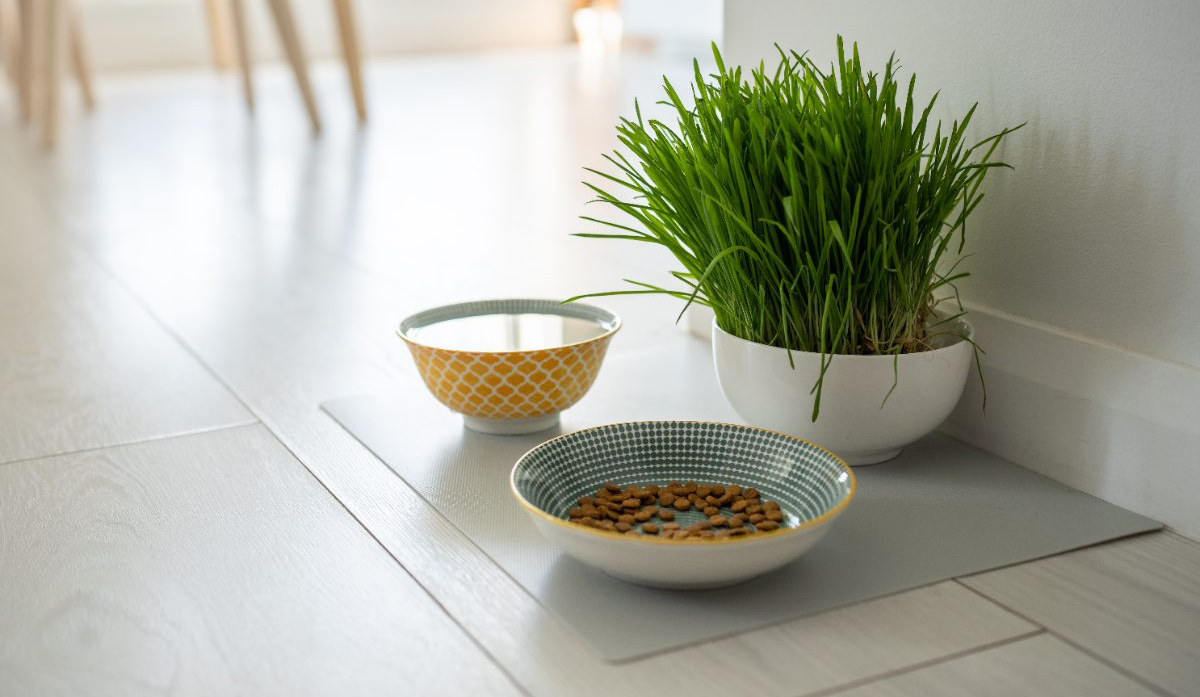
Yes, it’s OK for dogs to eat grass since they’re omnivores in the first place. So, don’t panic if you see your fur baby making a snack out of your lawn. It’s totally normal.
Dogs chow down on almost anything (my dog even eats her own poop when no one’s looking). While grass itself isn’t an issue, what might be on it (such as chemicals, parasites, lawn mushrooms, or sharp things) can turn your pet’s snack time into an emergency vet visit.
Why It’s OK for Your Dog to Eat Grass
According to Brian Marquez, a veterinary internal medicine specialist, eating grass is actually quite common for dogs.
“Dogs are not strictly carnivores,” he says. “They’re both meat and plant eaters…” and grass can even be “a little helpful” for them.
Think of it as your pup’s quirky way of literally taking in the scenery (and a little fiber to boot).
Here are a few reasons why it’s normal for dogs to eat grass:
- It’s in their nature: Dogs are natural foragers, and they might even see grass as a salad bar. Some people even say their dogs act like goats during walks.
- It adds fiber to their diet: A bit of roughage can help move things along in the digestive system. If your pup’s been feeling a little backed up, grass might help their belly feel better.
- They crave micronutrients: Grass has small amounts of vitamins and minerals, such as potassium and chlorophyll. So, it’s like a chewable multivitamin for dogs.
- They like it: While some dogs (like mine) don’t like stepping on grass, other dogs enjoy playing on the lawn. In fact, they love the texture of the grass so much that they eat it, too.
See Related:
When It’s Not OK for Your Dog to Eat Grass

“In most cases, it’s harmless (for dogs to eat grass),” says Marquez, but not all green is good.
“Grass in public areas may have contagious viruses like parvo (canine parvovirus), (which is) deadly to dogs,” he says. “Grass may also be toxic because of pesticides.”
In addition, grass can hide harmful plants or objects that your dog shouldn’t be chewing on.
It’s dangerous for dogs to eat grass in the following situations:
- Chemical-laced lawns: No matter how lush the green grass is, trust your nose. If the lawn smells more like a science lab than freshly cut grass, don’t let your dog near it. Hazardous lawn care chemicals, like fertilizers and most types of post-emergent herbicides, can make that patch of green extremely dangerous for your pet.
- Parasites and bacteria: If wildlife or other pets frequent the area, there’s a big possibility that the grass can host uninvited guests, such as roundworms or E. coli. It’s basically like eating buffet food without knowing if anyone sneezed on it.
- Sharp stuff hidden in grass: Twigs, thorns, or even broken glass could be hiding where you least expect it. Your dog may be peacefully grazing like a cow until suddenly it chomps on something that makes it yelp.
- Toxic plants mixed in: Not all greenery is dog-approved. Dandelions are fine, but foxglove or lilies are a major no-no.
- Risk of compulsive behavior: It’s OK for your dog to munch a few grass blades. But if it starts to obsessively eat grass like it’s an all-you-can-eat salad bar, it could signal anxiety or gastrointestinal issues.
See Related:
Why Do Dogs Eat Grass?
No one knows for sure why dogs eat grass. And if you ask a vet, an internet forum, and a dog trainer, you’ll get three different answers. Some are practical, some are medical, and some are just plain weird, but they all help paint the full picture:
- To fix their diet: Some dogs prefer whole foods, and they know just where to get them for free. They instinctively eat grass to fill in nutritional gaps in fiber, vitamins, and minerals.
- To feel better after a stomach ache: One of the most accepted reasons is that dogs eat grass to trigger vomiting or settle their stomachs. The “eat, puke, feel better” routine is basically their own version of Pepto.
- Because they’re bored: If there’s nothing for your dog to do in your yard, expect it to turn your grass into a buffet. Grass becomes their fidget spinner, so don’t be surprised when your lawn suddenly becomes patchy.
- Because they like the taste and texture: Dogs, similar to humans, can also have different food preferences. Some dogs enjoy the crunch of grass between their teeth. A friend told me that her dog prefers grass in the spring because “it tastes sweeter.”
- They see other animals do it: Dogs are also social eaters. If they see other animals eat grass, they will start eating it, too. Peer pressure is real, even in the animal kingdom.
See Related: Best Grass for Dogs
When Grass Eating is Concerning

Grass eating is normal until it’s not. If there’s a sudden change in your dog’s grass-eating habit, becoming obsessive, or leading to repeated stomach issues, it’s time to investigate. What does it mean when dogs eat grass obsessively or suddenly? Here’s what to look out for:
- Frequent vomiting after eating grass: If your pup throws up after eating grass, its stomach may not be in the mood, or it could be a symptom of a bigger digestive issue.
- Obsessive or compulsive behavior: If your dog is devouring grass nonstop, it might be funny at first. But it’s not normal at all. It could signal anxiety, obsessive-compulsive disorder (OCD), or something else that needs attention.
- Sudden behavior change: It’s a cause for concern if your dog suddenly starts gobbling grass when it never did before. Especially if it’s paired with lack of appetite, lethargy, or odd behavior.
- Signs of poisoning or discomfort: Drooling, shaking, or whining after grass eating could indicate exposure to toxins or irritants. You need to bring your dog to the vet immediately.
- Digestive troubles that don’t go away: Chronic diarrhea, constipation, or excessive grass grazing might mean your dog needs a check-up or diet change.
How to Keep Your Dog Safe

If your dog loves a good lawn snack, make sure they’re snacking smart. It’s OK for dogs to eat grass if you make it safe and supervised.
- Create a safe grazing zone: Designate a chemical-free area of your yard where your dog can nibble safely. It’s like giving them their own personal salad bar.
- Go organic with your lawn care: Forego the synthetic lawn treatments and switch to pet-safe fertilizers and pest control. No one wants a side of glyphosate with their grass.
- Grow dog-safe grasses: Wheatgrass and oatgrass are tasty, non-toxic options dogs love. You can even grow a little tray indoors for apartment pups.
- Watch your dog while outside: Keep an eye on where and how much grass they’re eating. It’s fine if it’s just a few bites. But a frantic lawn mowing imitation? Maybe not.
- Use training and redirection: Of course, you don’t want your dog to turn your entire lawn into their snack zone. Teach them a “leave it” cue and offer a treat or toy instead.
- GIF-worthy moments don’t equal safe moments: You may be aiming to get that GIF-worthy shot, but remember: Your pup’s safety comes first before the meme.
See Related: 10 Pet Dangers Hiding in Your Lawn
Make Your Lawn Safe for Grazing Your Dog: Hire a Pro
If you follow the safety tips above, feel free to let your dog channel its inner cow. As long as the lawn is safe and free from toxins, there’s usually nothing to worry about. To keep your pup’s grazing grounds healthy, consider hiring a LawnStarter lawn care pro who can help you maintain a dog-safe yard that’s green, clean, and beautiful as well.
Sources:
- Brian Marquez, a veterinary internal medicine specialist. Personal interview.
- “Dogs and Turfgrass Interactions.” By Grady Miller, professor, and Ray McCauley, Extension assistant. North Carolina State University.
- “Dog’s Weirdest Snack: Grass.” By Britta Wellenstein, researcher. University of Wisconsin-Madison.
- “Why Does My Dog Eat Grass?” By Andrea Rediger, veterinarian. Purdue University.
- “Why Does My Dog Eat Grass?” By Parker Evans, Translational Plant Sciences fellow. The Ohio State University.
Main Image: Dog eating grass. Image Credit: smerikal / Flickr / CC BY-SA 2.0